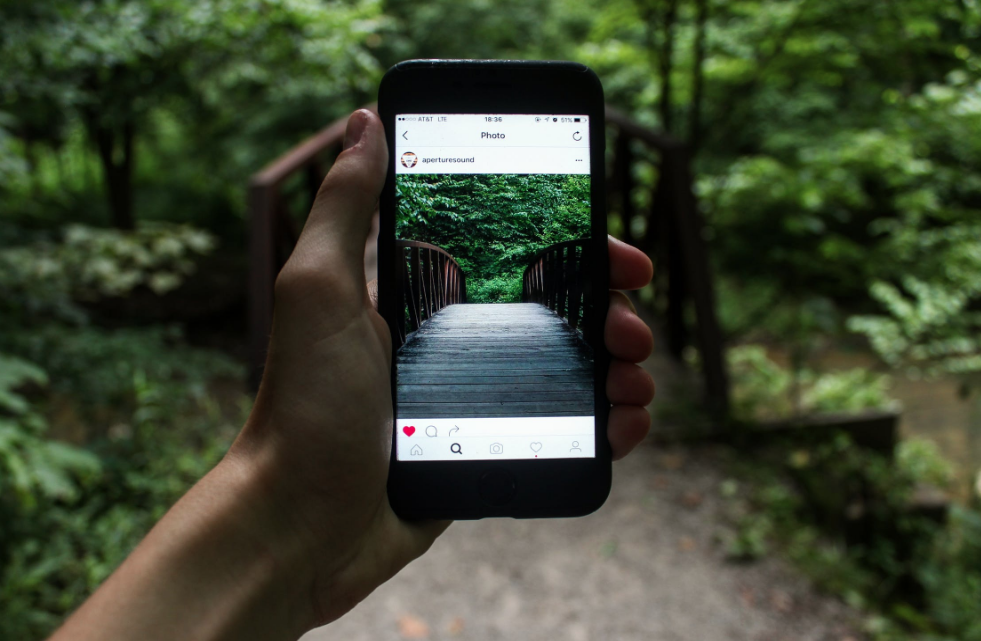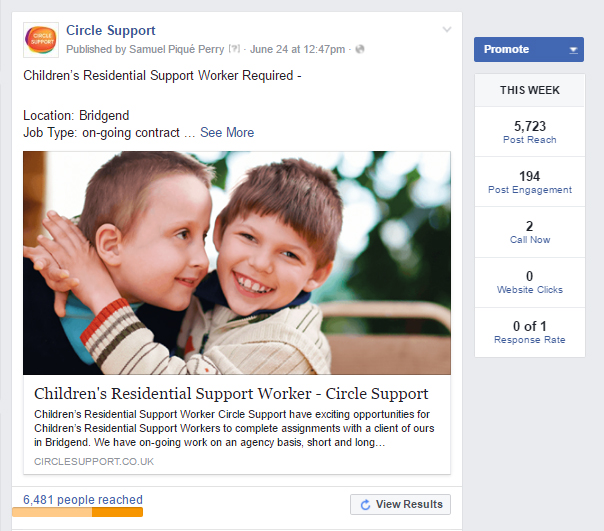Social media giant Facebook was the brainchild of Mark Zuckerberg who launched the platform back in February 2004 with fellow Harvard University student, Eduardo Saverin. Whilst it was initially designed exclusively for Harvard University students, Facebook was soon rolled out to colleges across the USA and Canada and eventually made available to anyone with a valid email address, over the age of 13 in 2006.
11 Years on from its public release, it’s now difficult to imagine a world without Facebook and it’s estimated that 2.2 billion people are active on the platform worldwide. However, recently there has been much controversy surrounding the social network.
There have been allegations that the social media giant has exposed the data of 50 million users without direct consent. In addition, Facebook’s moral position on connecting the wrong kinds of people has also been called into question.
While there is a distinct difference between using the platform on a personal level and as a business, the fact is that if people do delete their personal profiles, there will be no one left on the platform for your business to reach.
So, should you and your business still be using Facebook? We thought we’d let the statistics help you decide!
In Favour
> Website Quora reported that, “Mark Zuckerberg says he has not seen a “meaningful number of people” deleting their Facebook accounts in the wake of a scandal that caused users to question how well the social media site protected their data.”
> Facebook is a great way to reach a targeted audience.
> 83% Of women use Facebook while 75% of men use the social network.
> 16 Million local business pages have been created as of May 2013 which is a 100% increase from eight million in June 2012.
> According to technology research company Forrester, 78% of teens online use Facebook. This is the same proportion as in 2014 and Facebook remains one of the more popular social networking sites, second only in popularity to You Tube.
Against
> There are an estimated 83 million fake profiles.
> 40% Of Facebook users have never “liked” a Facebook page.
> Facebook has played a significant part in the rise of Fake News as it tries to position itself as a news portal while continuing to promote freedom of speech. You can see where the lines become blurred.
> The newsfeed has now become so diluted that it’s not considered a valuable source of information.
> There is an argument that Facebook can take traffic away from your business’ website.
Make up Your Own Mind
Essentially no one can answer this question for you because each and every business is different. Even with the recent controversy, the network remains popular and even while some millennials now deem it “uncool” it’s unlikely that we’ll see a total boycott anytime soon.
Given the statistics above, it might seem crazy not to have a business presence on Facebook. However, it’s worth considering your target demographic and whether this is the right platform to reach them.
Having a Facebook page is only really worthwhile if you’re going to spend time updating it with engaging content. But what if the people who you want to engage with your content aren’t there? It’s worth considering if investing your time on this social network is worth your effort.
Security and data breaches aside, using things like Hootsuite can help save time with your social media posts, allowing you to simultaneously post to accounts on different social networks. Making it easy enough to keep your business presence on this platform and keep your page content ticking over.
If you’d like more information on how to set up a company page for your business on Facebook or if you require some other social media support, contact our team. You can email [email protected] or call us on 01600 891525.
In the world of digital marketing, there is no doubt that content is key. While most of us will spend time perfecting copy and keywords to improve our website’s SEO ranking, or social media search results, we should be paying equal attention to our imagery – and here’s why…

1. 90% of information transmitted to the brain is visual and visuals are processed 60,000 times faster in the brain than text.
2. Using images in your social media posts improves engagement. On Twitter engagement on posts including images is 35% higher than those without. Whereas Facebook users will see 53% more likes on posts with an image which in turn are 84% more likely to receive a link click.
3. Images help your audience remember your message. We remember 10% of what we hear once 72 hours have passed. If we’ve seen a supporting image, this increases to 65%.
4. Images help with your organisations visual identity which is just as important as your brand voice.
5. Images have a strong emotional factor which can bring out emotion in an audience and encourage them to act.

For more information email [email protected] or call us on 01600 891525 to book your place now.
At LimeGreen, we specialise in providing bespoke marketing solutions for businesses across a range of industries. While our complete social media management packages are popular with many clients, we also understand that this isn’t always right for every business.
Depending on the service or product you’re offering, certain times of the year are going to be busier for you than others. So, if it’s some short-term support that you’re looking for, we’re here to help!
Here are just two organisations who have benefited from some seasonal support with their social media.
The National White Water Centre
The National White Water Centre on the River Tryweryn in Snowdonia National Park is the UK’s original white water rafting venue.

While they had already established themselves on social media and developed loyal followers, the team sometimes struggled to keep on top of their channels during popular paddling times, when the centre was at its busiest.
We supported the team by managing their social media accounts during these busy summer months.
By using Hootsuite Teams, we were able to schedule social media content whilst allowing the team to share of the moment posts. A shared digital content library was created where imagery, videos and marketing materials could easily be accessed by both parties.
We produced well-balanced content for all social media channels including videos, imagery, testimonials, facts and figures, real time information, industry articles and promotions in order to attract new visitor and keep existing centre users engaged.
Hashtag research established which terms were popular with our audience, enabling us to strategically target them by activity or interest. A centre specific hashtag was created to encourage followers to start their own conversations on social media – #WhiteWaterWales.
In order to support the team going forward, we produced a social media content calendar template to help them plan and schedule content while the centre is quieter over the Winter months.
Hart’s Traditional Turkeys
Hart’s Traditional Turkeys raise a limited number of premium free-range turkeys with love and care in the beautiful traditional way on their Gloucestershire farm.

Hart’s wanted to take part in the NFU ‘#BuyMyTurkey’ campaign which aims to share messages of why buying local is important this Christmas.
Farmers are encouraged to post pictures of themselves, their farm and their turkeys on social media, telling us why they’re proud, and why local is best, while using the hashtag #BuyMyTurkey.
We started with some basic housekeeping of Hart’s Twitter account to ensure that their brand identity was clearly recognisable and in line with what customers would see on their website and Facebook page.
We set up Hootsuite and gave the team a crash course in how to use it to schedule content in order to make the most of their social media channels during the busy festive season.
If you think your business would benefit from some social media support this festive season we’d love to hear from you! You can email [email protected] or pick up the phone and call us on 01600 891525.
What is a # Hashtag?
A hashtag is a word or phrase without spaces with a hash mark (#) in front of it. It is used to identify a keyword or topic of interest in a social media post.
For example, ‘#HowToUseHashtags’ is a hashtag!
When used properly, hashtags make it easier for users to find related content. Including them in your social media posts will help increase the visibility of your messages.
What’s the Difference Between ‘#’ and ‘@’?
Now you know what a hashtag is, it’s important that you know how to use it. So, let’s start by clearing up some simple symbol confusion.
When you’re starting out on social media, ‘# – hashtag’ and ‘@ – at’ are easily confused but they have different functions and it’s important to be aware of these if you want to make the most of your social media posts.
The good news is that these functions are the same across most social media platforms and so you’ll only have two rules to remember
-
- If a word has the symbol ‘#’ in front of it, it’s a hashtag.
- If a word has the symbol ‘@’ in front of it, it’s a specific social media account.
So, if we were to write the following message,
“Did you know that @LimeGreenMarketing can help businesses with their #SocialMedia?”
‘@LimeGreenMarketing’ directly mentions the business’ social media account and ‘#SocialMedia’ is the keyword or topic of interest, or hashtag.
Using Hashtags on Different Social Media Platforms
While the function of a hashtag is essentially the same on each social media platform, it is worth noting that there are subtle differences in the most effective ways to use them. We’ve put together some pointers for the three most popular social media channels below.
Given that Twitter is where the it all began, it’s no surprise that this social media platform has enabled the humble hashtag to be more versatile than most.
Like other social media channels, hashtags are used on Twitter to find relevant content and conversations to get involved in. By having a public profile, your tweets that include hashtags will appear in search results for that term. This means users who aren’t already following you can find your account through a common interest or topic via the hashtag.
But how many hashtags should you include? In general tweets with one hashtag receive the most engagement whereas using three or more on this platform have been proven to lower engagement.
If you’re unsure which hashtags you should be using, take a look at the “Trends” sidebar of your Twitter feed. This creates a list of hashtags you might be interested in based on your tweets.
You can filter the results when you search for a hashtag on Twitter. The “Top” option displays the most relevant and popular posts, including those from users you don’t follow, “All” shows you every tweet that uses the specific hashtag in real time, and “People you follow” will only display results from users you are following. Good to know!
Instagram is a visual social media platform. Using hashtags on Instagram allows photos with the same hashtag to be collated into one stream. This makes discovering content and finding new users with similar interests easy to follow.
While Instagram limits users to 30 hashtags per post (which seems like plenty!), there is no universally agreed correct number of hashtags to use on this platform. Our advice? Keep your hashtags relevant and don’t forget to include some plain text with your photo too.
If you want to include a hashtag in your Instagram post, type the ‘#’ symbol and Instagram will give you suggestions based on popularity.
Rather than asking how to use hashtags on Facebook, it’s worth asking if you should be using them at all. As the last of the three major social media platforms to follow suit with the hashtag feature, Facebook’s functionality is a little more limited. While clicking on Facebook hashtags will take you to a list of posts containing the same hashtag, the results are not limited to people you know.
It is now possible to filter hashtag search results on this platform. However, data has shown that using hashtags on Facebook posts does not help boost engagement like it does on other social media platforms.
If you’re determined to use hashtags on this platform, we recommend you do so sparingly – one per post will be just fine.
Creating Your Own Hashtags
As well as tapping into hashtag trends, it’s easy to create your own. While you could conduct your own hashtag research to get you started, we simply suggest following these simple rules:
-
- Try to keep your hashtags to no more than three words. This makes them easier to remember and more likely for others to remember.
-
- Use a capitol letter for the start of each word in your hashtag sentence. While hashtags are not case sensitive, it will make them easier to read and will avoid any embarrassment. Do you remember #susanalbumparty, or rather #SusanAlbumParty? Did you see it? Exactly, take our advice!
-
- Alliteration often works well in hashtags e.g. #ThrowbackThursday or #FridayFeeling.
-
- Hashtags can be brand specific or campaign specific. Brand specific hashtags can be included in any post. Campaign specific hashtags will be used for one off promotions.
5 Hashtag Facts
Now that you know how to handle your hashtags, we thought we’d include some facts and figures for you to impress your friends with.
- It’s thought that the symbol we know today as a hashtag has evolved from the 14th century abbreviation for pound weight – libra pondo or lb. A horizontal slash was added to denote the letters were connected and over time messy writing resulted in the hashtag.
- Hashtags were born on Twitter.
- In 2007 former Google employee, Chris Messina was the first person who tweeted using a hashtag.
- The word “hashtag” was added to the Oxford dictionary in 2010 and the Scrabble dictionary in 2014.
- Almost 75% of people on social media use hashtags – whether they are all using them correctly is a different story altogether!
If you’re still unsure about how to make the most of hashtags on social media get in touch with our team. We offer social media support and training tailored to you and your needs. Call us on 01600 891525 or email [email protected].
The new year is the perfect time to make resolutions and what better new year’s resolution to make than a vow to improve your social media? We’re on hand with some helpful hints to help make you social media savvy in 2021. So, let’s get started…
Creating a Social Media Schedule
A social media schedule can sound like a lot of work but in fact, this will save you time. By setting aside a small amount of time each week – or month depending on how far ahead you’d like to look – you can find some focus and hatch a plan so that you know exactly what you’re going to post and when.

What Content Should I Post?
Images – Images are nice to look at. Images catch peoples eye. Facebook posts with images receive 120% more engagement than those with plain text. This is equally true with Twitter. Including an image on a tweet increases retweets by 150%.
Infographics – Infographics are the most socially shared form of content. They communicate data quickly and simply with minimal effort on the audience’s part. Share your stats.
Newsworthy Content – People want new information all the time. Current, up-to-date news stories, that are relevant to your organisation are worth sharing. Be a source of useful information as well as being your brand.
Quotes – Be it humorous, inspiring, motivational or thought provoking, quotes are quick to read and are a good way of getting an easy like or share.
Behind the Scenes Photos – Give your followers something extra, something that they wouldn’t see on your website or read on your blog. These types of images help tell the story of your brand and humanise what you do.
Reviews – If your business is doing well, shout about it! Word of mouth is a powerful tool. So is a social share.
Recurring Posts – Give your audience a reason to come back. A regular feature like a blog post or fun fact posted at the same time each week can work well.
Products and Promotions – Think of social media as your digital shop window. Sell yourself.
Where Can I Find Good Content?
Blog Posts – If you already have a blog make sure you share your posts on social media, but don’t stop there. Do you read other blogs? If they’re relevant to you and your business or you have something to say about them, go ahead and share.
Your Website – Don’t forget to encourage people to visit your website by regularly sharing links. This is where people will find the most detailed information about who you are and what you do.
The News – Try to get into the habit of keeping your eyes peeled for stories that would interest your followers. If you can’t share them right at that moment, save them for later or set a reminder. You could start to build up a bank of content quite quickly.
YouTube – Video is booming, and with 300 hours of it uploaded to YouTube every minute, you’re bound to find something to share.
Canva – Not a Photoshop whiz? Canva is an online tool which allows you to create simple social media sized images, with lots of free content and the option to upload your own too.
Pinterest – Pinterest is a platform based on organised content. Someone else has already done all the hard work for you. Just type in your key words and let the search feature do the rest.
So, there you have it, what are you waiting for?
If you’re interested in talking to our team about your own social media marketing requirements we’d love to hear from you. Email [email protected] for more information or give us a call on 01600 891525.
At LimeGreen Marketing we love creating multi-channel, all-singing, all-dancing digital marketing campaigns, but we know that not every organisation has the budget for this.
For all of our clients the main objective is predominantly the same, to promote their business, engage with their target audience and maximise the potential of their online presence.
LimeGreen can provide different levels of consultancy and support to suit all budgets, but what if you have no budget? That’s exactly the problem Home-Start Monmouthshire had come up against.
An independent registered charity, Home-Start Monmouthshire supports struggling families, with at least one child under five, living in the county. The scheme is managed by a board of volunteer trustees, but the day to day running is administered by a small staff team of four. The small but dedicated team then recruit, train and supervise 45 volunteers, each typically giving two hours of their time each week. The charity is responsible for raising all its own operational costs.
Home-Start Monmouthshire wanted to raise the profile of their local charity and the great work they’ve been doing, but weren’t quite sure how to make the most out of the free social media resources that were available to them.
Their aims were to recruit volunteers, attract potential donations and engage with service users, while utilising the skills of their recently appointed ambassador, author Julia Gregson. Raising awareness of their work would be paramount in order for them to fundraise and continue helping families in the area.
LimeGreen were only too pleased to visit Home-Start Monmouthshire and provide their staff and trustees with a crash course in marketing and a few hints and tips on using Facebook over a cup of tea and a well-earned biscuit.
We put together a quick guide for making the most of the Home-Start Monmouthshire Facebook page, most of which the team were already doing. Here’s what we had to share…
- Post regularly. An active account will always receive more interaction.
- Include images with every post if you can. This makes them more eye-catching and therefore it’s more likely that people will engage with them.
- Try to use images of people where possible, real personalities where you can see a facial expression are easier for people to relate to and this humanises what you do which is especially important given your charity work.
- Don’t forget to include links to relevant pages of your website, in your Facebook posts from time to time to drive traffic to your website.
- Don’t be afraid to add some personality to your posts – where appropriate. Celebrate your team. Your work is important but it doesn’t all need to be a hard-hitting serious stuff.
- Mix in some facts and figures every now and then to show what Home Start Monmouthshire has achieved. Infographics are a particularly useful way to communicate this without using masses of text.
- Join as many relevant Monmouth/Monmouthshire groups as possible so that you can like and share your page information and reach out to more people.
- Share industry relevant content and engage with similar organisations.
- Look for national days and awareness weeks to engage with on social media.
We also shared some great links to free resources to help make their Facebook posts more engaging…
Canva enables you to create visual content for social media and print using pre-designed templates. It is a user friendly platform with lots of great free content and, if your requirements are basic, can prove to be quicker than using a design tool such as Photoshop.
There are lots of websites with brilliant high quality imagery which has been authorised for reuse and is completely free. This Hootsuite article has a list of 20 of them. – https://blog.hootsuite.com/20-free-stock-photo-sites-social-media-images/?utm_source=twitter&utm_medium=owned_social&utm_campaign=social_hootsuite&hootPostID=da6a94b470da2fbdf64cad03cb39e4af
You can follow the team at Home-Start Monmouthshire on Facebook here.
To find out more about our consultancy services head over to the Digital Support page of our website. Alternatively, if you’d like to speak to one of our team about your own social media goals, get in touch.
What do you need to know about boosting posts?
Many companies use Facebook as a tool to engage with their target market and to drive traffic to their websites.
Before 2014 Facebook was the best platform to reach as many people as possible with the minimum amount of effort. Great! Times were easy, engagement was high.
But in 2015 Facebook reduced its efficiency, drastically! The reason was simple, developers realised that reducing the efficiency of Facebooks reach would encourage more people to pay for boosted posts.
Great for Facebook, not so great for the rest of us who were left scrabbling for a new social media budget.
Fast forward to today and, whilst Facebook may no longer be as easy to promote from as it once was, its boosted post option is still one of the cheapest and most effective ways to reach its one billion members.
Example:
The account below is an excellent example of the effectiveness of post boosting.
By targeting this post directly to their customers and providing content which is both useful, attractive and linked to their site this recruitment company were able to increase reach from an average of 250 to nearly 6,500. This boost also resulted in a peak in website visitors and therefore improved applications to this job.
What should I boost?
Boosted posting is something which requires your direct attention, not simply because you want to make sure you are reaching the right people in the right way, but also because a mistake can really take a bite out of your pocket.
There are really only two types of post which warrant boosting with your cash, content which is rich in useful information, such as blogs or jobs, and existing posts which already have great engagement.
Boosting allows marketers to target specific customers by geography, employment sector and interests ensuring that your post appeals directly to your exact customer base.
When should I boost?
As with all aspects of social media timing is not only key but also completely subjective.
Go back through older posts and search for a correlation between the time of the post and the level of engagement.
Put yourself in the shoes of your target client, if they are teachers they may be more likely to be using Facebook during lunchtimes or evenings, whereas office workers are likely to have access to social media all day and start to surf later in the working day from 4pm onwards.
Be logical and gather data before you jump in.
Post boosting is certainly an advantageous way to target your customers and builds on Facebooks already beneficial structure to reach as many people as possible.
Key Points:
– Posts are eyecatching
– Posts link to a website
– Posts contain useful information or rich data such as video or imagery.
– Boosts are targeted effectively using the boost building tool
– Boost at a time which relates to your target market


